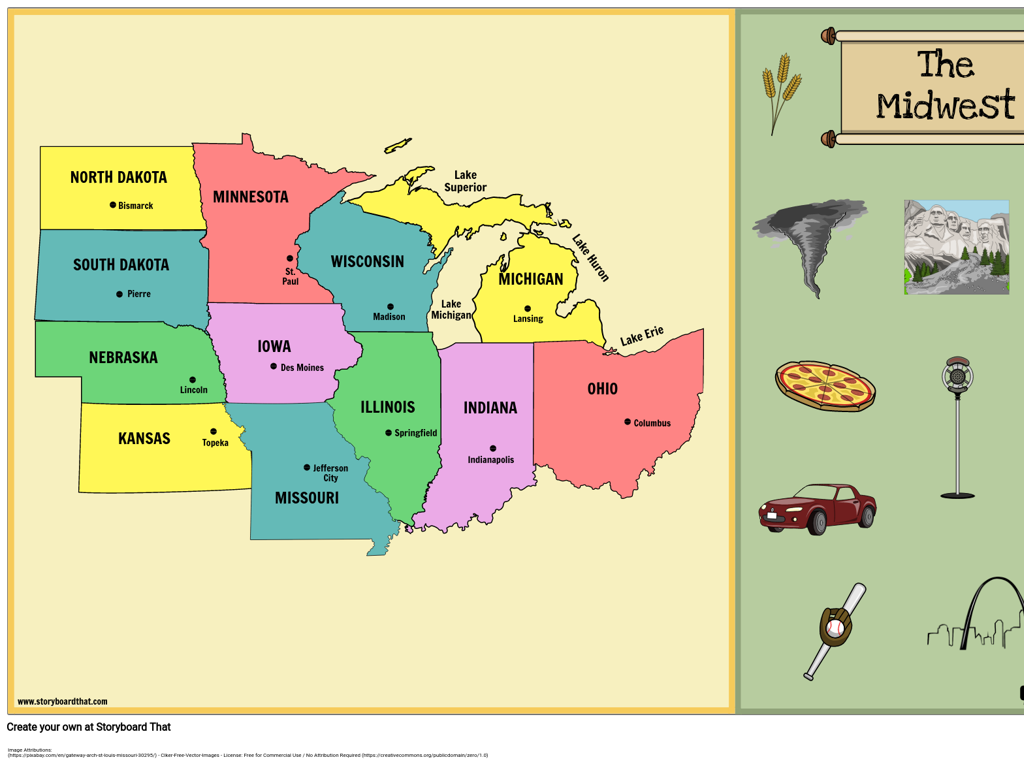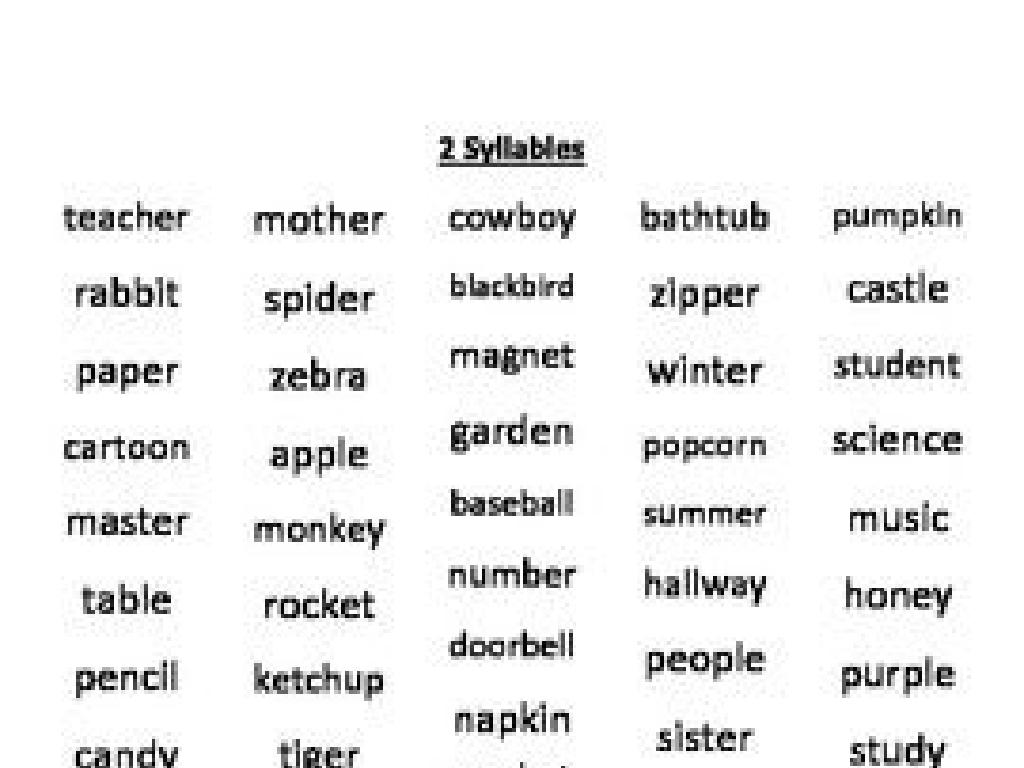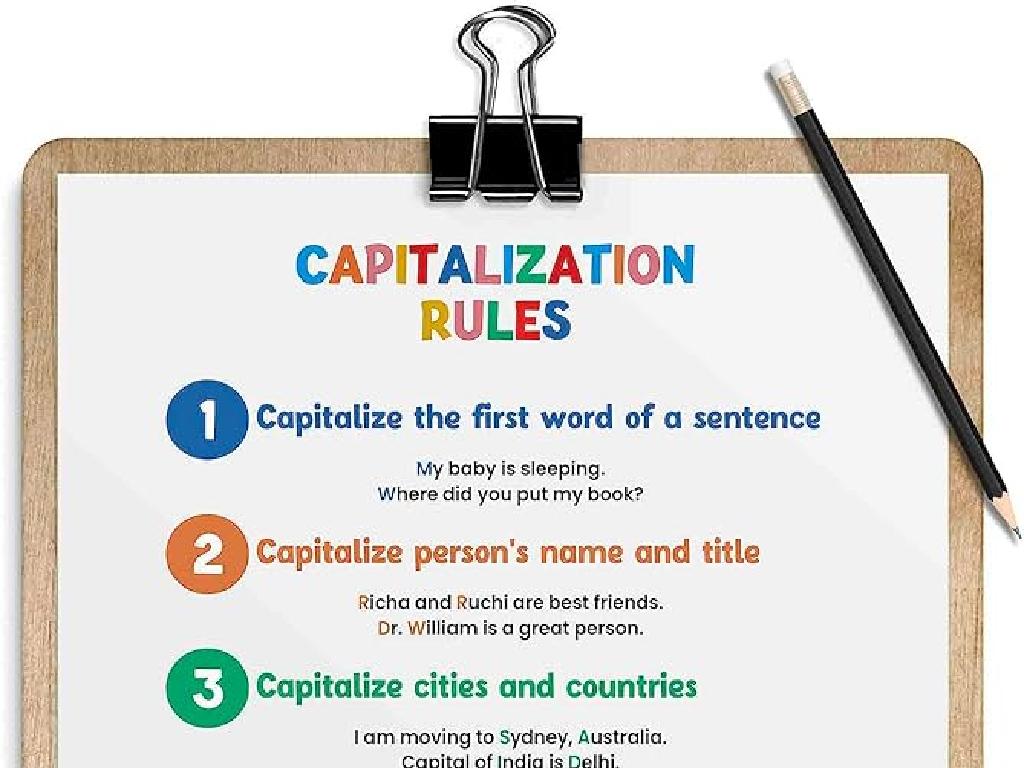Use Actions And Dialogue To Understand Characters
Subject: Language arts
Grade: Fifth grade
Topic: Inference
Please LOG IN to download the presentation. Access is available to registered users only.
View More Content
Understanding Characters: Inference Through Actions and Dialogue
– What is inference?
– Inference is like being a detective, using clues to figure things out.
– Using clues in everyday life
– Focus: Characters’ actions and dialogue
– How characters act and what they say helps us understand them better.
– Practice inferring traits from behaviors
– We’ll look at examples and guess characters’ feelings and motives.
|
Inference is a critical reading skill that allows us to read between the lines and understand what’s not directly stated. Begin by explaining inference as a concept, comparing it to solving a mystery using clues. Emphasize that we use inference skills daily when we interpret social cues and situations. Today’s lesson will focus on how to apply these skills to literature, specifically by examining characters’ actions and dialogue. Provide examples from familiar stories or create hypothetical scenarios where students can practice inferring characters’ personality traits, emotions, and motivations based on their behaviors and conversations. Encourage students to share their inferences and the clues that led them there.
Understanding Characters in Stories
– Characters: Who are they?
– Characters are the people or animals in a story.
– Real vs. Imaginary characters
– Actions speak louder
– A character’s actions can show bravery, kindness, or other traits.
– Dialogue reveals personality
– What characters say provides insight into their thoughts and feelings.
|
This slide introduces the concept of characters in literature. Characters are the heart of any story, and they can be people, animals, or even objects with personified traits. They can be based on real-life individuals or entirely fictional. Understanding characters is crucial for students as it helps them to connect with the story and enhances their comprehension. Actions of characters often speak volumes about their personalities and motivations, while their dialogue can reveal their inner thoughts, relationships, and more. Encourage students to think about their favorite story characters and what their actions and words tell them. This will prepare them for deeper analysis and discussions about character development in literature.
Actions Speak Louder Than Words
– Characters’ actions reveal traits
– Example: Helping an injured animal
– Shows kindness and compassion
– Analyze actions for personality clues
– Actions often speak louder than words
– Actions vs. Words: What’s learned?
– Compare what characters say to what they actually do
|
This slide aims to teach students how to infer character traits from actions and dialogue. Start by explaining that what characters do and how they interact with others can give us insights into their personalities. Use the example of a character helping an injured animal to illustrate kindness. Encourage students to think critically about the actions of characters in stories and what those actions might mean. Discuss how actions can sometimes contradict words, leading to a deeper understanding of a character’s true nature. Have students bring examples from their favorite stories or books to discuss in class.
Dialogue Reveals Character Traits
– Dialogue: Characters’ conversations
– Reveals thoughts and feelings
– Consider what is said and why it matters
– Example: Tone shows respect or disrespect
– ‘Please pass the salt’ vs. ‘Give me that salt!’
– Dialogue’s role in understanding characters
|
This slide aims to teach students how to use dialogue as a tool for understanding characters in a story. Dialogue is the conversation between characters and it provides insight into their personalities and emotions. For example, the tone and choice of words can indicate whether a character is polite or rude, showing respect or disrespect. Encourage students to think about not just what is said, but how it’s said, and what that might mean about the character. Have them practice by reading dialogues and inferring traits from them. This will enhance their ability to make inferences and deepen their comprehension of the text.
Understanding Characters Through Actions and Dialogue
– Actions & dialogue shape character
– How what they do and say reveals who they are
– Infer motives & traits
– Guess why characters act/speak as they do
– Examples of character analysis
– We’ll explore characters from familiar stories
– Group activity: character study
|
This slide aims to help students understand how a character’s actions and dialogue contribute to their overall portrayal in a story. By examining what characters do and say, students can make inferences about their personalities, motives, and traits. Use examples from books the class has read, or introduce new, brief scenarios to illustrate this point. After discussing the examples, engage the class in a group activity where they choose a character from a story and analyze them using the information gathered from their actions and dialogue. This will help students practice inferring and understanding characters on a deeper level.
Example Time: Understanding Characters
– Read the provided story excerpt
– Identify characters’ actions and dialogue
– Look for what characters do and say
– Discuss character revelations
– What do these actions and words suggest?
– Reflect on the characters’ traits
– How do their behaviors reflect who they are?
|
This slide is aimed at helping students use inference to understand characters better. Start by reading a story excerpt together, then guide the students to focus on the characters’ actions and what they say. Encourage them to think about how these elements provide insights into the characters’ personalities, motivations, and relationships. Facilitate a discussion where students can share their thoughts and interpretations, and help them connect the characters’ actions and dialogue to specific traits or qualities. This exercise will enhance their analytical skills and deepen their comprehension of character development in literature.
Your Turn to Infer: Character Analysis
– Pair up and pick a book character
– List character’s actions and dialogues
– Infer traits from actions and dialogue
– Actions and words can show bravery, kindness, or other traits
– Discuss what these reveal about the character
– Does the character act friendly? Are they brave in tough situations?
|
This activity is designed to help students practice making inferences about characters based on their actions and dialogue. By working in pairs, students can discuss their ideas and deepen their understanding. Encourage them to think about how a character’s behavior and speech can give clues to their personality, feelings, and motivations. For example, a character who shares their lunch might be generous, while one who whispers secrets might be sneaky. Provide guidance on how to make thoughtful inferences and remind students to use specific examples from the text to support their ideas. Possible activities could include role-playing, creating character profiles, or drawing scenes that highlight the inferred traits.
Class Activity: Role-Play to Understand Characters
– Form small groups for a skit
– Create characters with distinct traits
– Think about how your character behaves and why
– Use actions and dialogue in your skit
– Show don’t tell: let your character’s actions and words reveal who they are
– Perform and demonstrate for the class
|
This activity is designed to help students understand how actions and dialogue contribute to character development in a story. By working in groups, students will collaborate to create a short skit that showcases the traits of their chosen characters through their behavior and speech. Encourage students to think deeply about what makes their character unique and how to express that creatively. Provide guidance on how actions can show personality, such as a character who helps others indicating kindness. As they perform, they’ll practice inferring traits from these cues. Have a discussion afterward about what traits were clear and why. Possible variations of the activity could include reenacting scenes from a book they’ve read, creating original stories, or improvising scenarios.
Conclusion & Reflection: Understanding Characters
– Recap on inference in stories
– Understanding characters enhances reading
– Knowing characters’ actions and words helps us feel like part of the story.
– Reflect on today’s learning
– Think about how inference made the story more enjoyable.
– Share your favorite part of the lesson
– Was it acting out scenes, or discussing characters?
|
As we wrap up today’s lesson, take a moment to review the concept of inference and how it helps us understand the actions and dialogue of characters in a story. Emphasize that by using inference, students can become more engaged readers and enjoy a deeper connection with the narrative. Encourage students to reflect on how this skill has improved their reading experience and to share their thoughts on what they found most enjoyable about the lesson. Perhaps they liked guessing what characters would do next or enjoyed a particular story or activity. This reflection will help reinforce their learning and provide valuable feedback on the teaching methods used.






